Why Your SaaS Business Needs Free Tools
A couple of years ago, my co-founder Neil Patel and I spent $45,000 developing a free content analysis tool for our company Quick Sprout. Within four days, our free tool generated 17,747 leads. We saw a higher engagement on our site with each visitor who tried the tool, as well as lower bounce rates.
Out of all of the advanced guides and content we’ve produced on Quick Sprout over the years, nothing has generated as much ROI as our free tool.
With customer acquisition strategies like inside sales and paid acquisition, you have to constantly spend more to acquire more customers. To scale acquisition, you hire more sales people or spend more money on ads. You see diminishing returns when you utilize these marketing strategies because the incremental cost of adding new customers increases as the channel declines over time.
Your cost of customer acquisition (CAC) is the sum of your total sales and marketing spend, divided by the total number of customers acquired:
CAC = Total Cost of Sales & Marketing / # of Customers Acquired
As you acquire more customers, you end up with a graph that looks like this:
Free tools are a CAC hack that help you lift the curve over time and acquire new customers in a more cost-efficient way. Patrick Campbell, CEO of Price Intelligently, explains about freemium products:
“You can lower your CAC and increase your distribution substantially by utilizing the baseline product as a lead source, similar to an ebook, but one that’s much better and much more valuable to our users.”
Free tools work similarly. Instead of making your baseline product free, you release a tool separate from your core product for lead generation. The tool helps you generate qualified leads at a much lower cost than paid acquisition or sales.
To calculate CAC for your free tool:

CAC = Cost to acquire free user + Cost to develop free product + Cost to support free product
Looking at the graph above, you can see that a free tool costs more money early on because you have to factor in development costs. Over time, it’s more cost-efficient, because you don’t have to layer additional sales and marketing expenses on top to scale.
Free tools are the ultimate CAC hack because they immediately solve problems for your customers, proving the value of your paid product right off the bat.
Free Tools For Everyone
In SaaS, you should be looking for free tool opportunities all of the time. Free tools help you penetrate an organization and build your brand by helping people—for free. There are a lot of different tools you might build, from a calculator to a website analyzer.
Choose based on the type of customer you’re after:
1. If you’re targeting developers, create open-source and free developer tools.
At big companies, IT and engineers are often considered cost centers. Developers typically don’t have a budget—but they do influence what products are purchased. By helping developers code better for free, you build up goodwill that gives you a wedge into the organization.
2. For marketing and sales, use free tools to help people identify weaknesses and show they can improve.
Marketing and sales typically control their own budget within an organization, which means that the people using your tool are the people who pay for your product. By delivering value with a free tool, you position your product as worth paying for.
3. For product people, build a free tool with a use case that’s related to your core product, but with a lower barrier to entry.
If you have a technically complex SaaS tool built on top of an API, you might need a developer to implement the solution—but developers aren’t your end user. By building a separate free tool as a product, you help build visibility around your core product by getting it in front of a bigger audience.
Let’s dig deeper into each category of free tools.
Open Source and Developer Tools: Free Tools Put You In the Stack
Building free open-source and developer tools helps you build grassroots adoption that you can leverage for customer acquisition down the line.
Large enterprise companies are often locked into expensive, multi-year contracts with Oracle or SAP. Developers and engineers don’t necessarily like the software products they’re using, but because they don’t control the budget, they don’t have a choice. By helping developers code better with free tools, you place your brand directly into a company’s code and infrastructure.
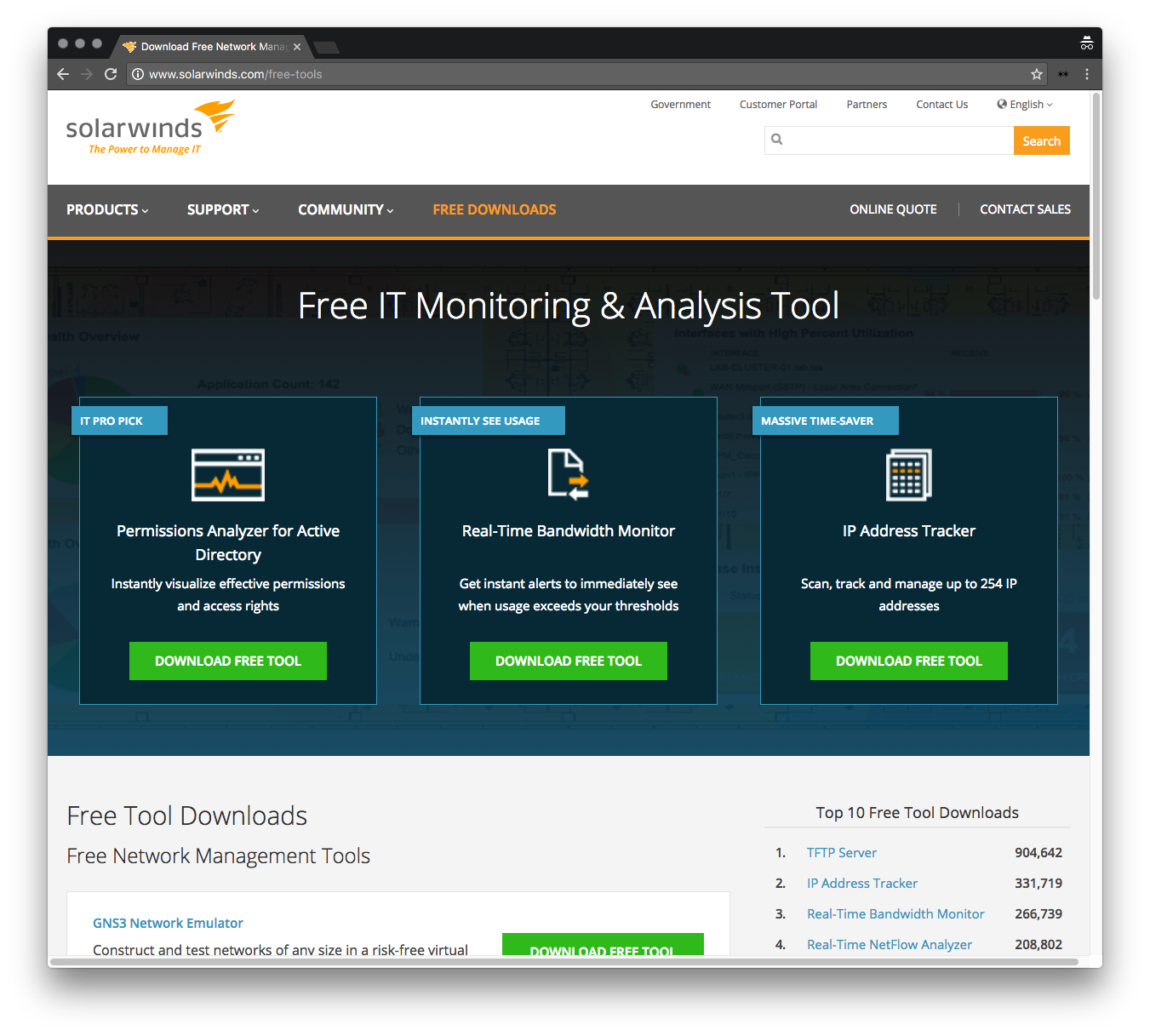 SolarWinds’ free tools landing page
SolarWinds’ free tools landing page
SolarWinds, an enterprise IT and infrastructure management software company, executes on this perfectly. They offer an all-in-one suite of products for monitoring network performance and system administration—and over 30 free tools.
SolarWinds’ business model revolves around selling its products at a higher volume and much lower cost than its competitors. With free tools, they aggressively target end-users, cutting out the expensive outbound sales strategy used by IBM and HP.
By giving away basic tooling for free, SolarWinds achieves widespread distribution. For smaller organizations, SolarWinds provided better free tools than alternatives like Nagios. For larger organizations already locked into a really expensive HP or IBM server system, SolarWinds’ free tools positioned the company as a cheaper and better solution among developers.
When it came time to buy, SolarWinds had already built up a brand and a following within the building.
Here are a couple more examples of how open-source and developer free tools help companies acquire leads:
- Segment’s Analytics.js: Segment open-sourced Analytics.js, the event-tracking library that makes it easy to send user-generated events data to any tool. Segment’s core product is a managed analytics hub that allows you to integrate data from all of your different tools and sync them into a centralized data warehouse. Analytics.js makes it easier for people to collect data, while Segment helps people maintain it.
- Github’s Atom: Atom is an open-source text-editor. It was designed by developers at Github to offer better extensibility for writing code. The developer community has helped create 800 different packages for Atom, and Atom has been starred 34,199 times on GitHub. GitHub provides free public hosting for developer projects. Its paid plan allows individuals and businesses to host private repositories.
- Docker’s Container Engine: Docker’s core product is its open source docker container—a standardized unit for software development that wraps your application file system into a universal container. Docker’s open-source projects have been downloaded by over 450 million people, helping the company reach massive distribution. The company monetizes by charging for hosted containers on Docker’s cloud, as well as extra services like support.
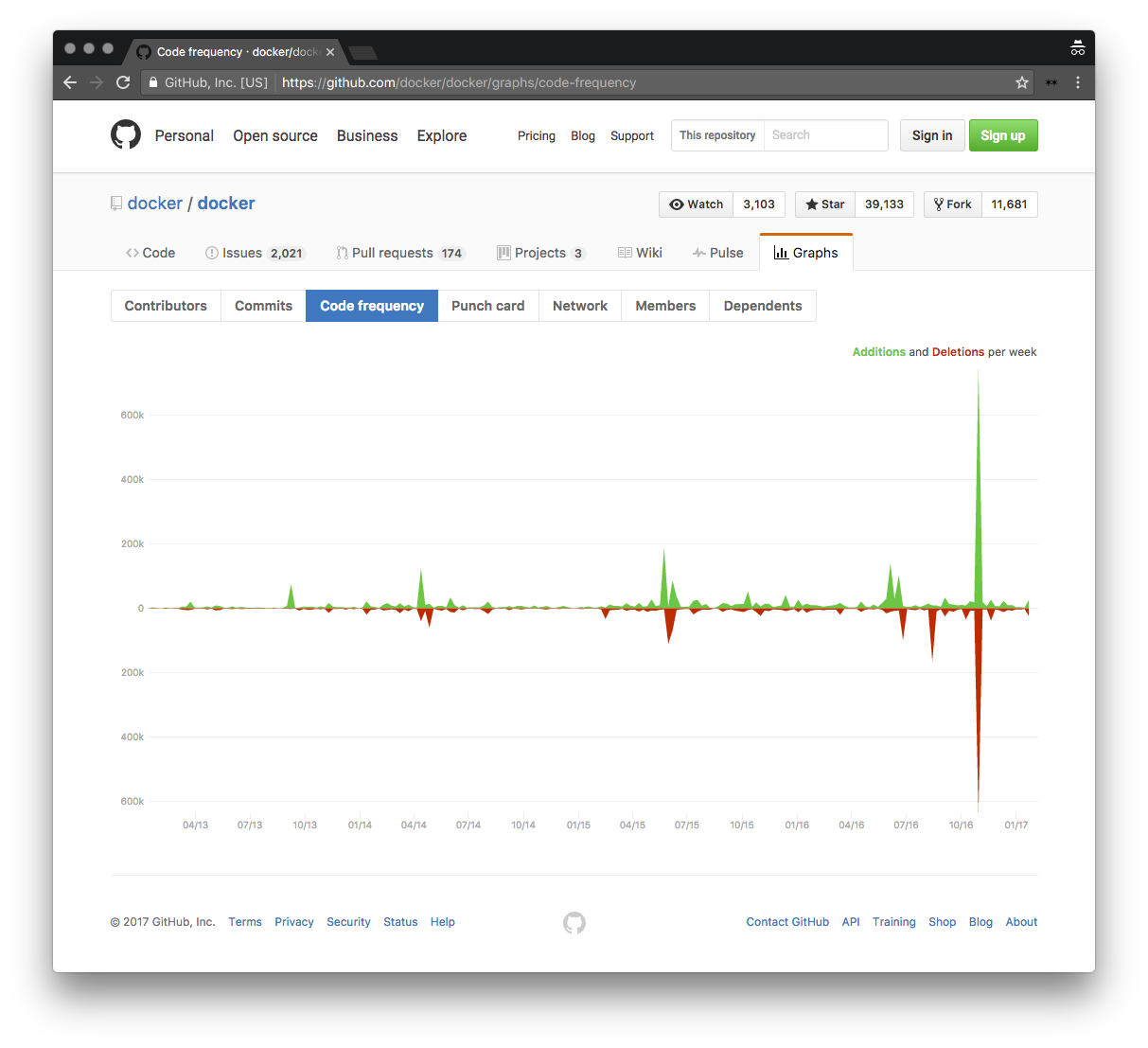 Open-source and developer tools were the original free tools. They were created by developers to help other developers write better code. Today, we’re seeing companies like Docker and Segment build entire businesses around free tools. They use free tools as a low-cost window into an organization, and monetize by layering additional service and support on top.
Open-source and developer tools were the original free tools. They were created by developers to help other developers write better code. Today, we’re seeing companies like Docker and Segment build entire businesses around free tools. They use free tools as a low-cost window into an organization, and monetize by layering additional service and support on top.
Marketing & Sales: Identify Problems With Free Tools
Unlike developers, marketing and sales don’t need or want to write code. Free tools help marketers and sales people do their jobs without having to lean on development resources.
In the 2000s, marketers who were able to recruit engineering talent could test more and drive growth faster than the competition. But few companies had the resources to have engineers work on marketing initiatives. Free tools like website graders and analyzers allowed marketers to identify shortcomings —and fix them without engineering.
The best example of this is HubSpot’s free Website Grader, launched in February 2007. The early version of WebSite Grader was incredibly simple—all you had to do was type in your URL. HubSpot would email a report back, grading your website for SEO, and analyzing your site for keywords, inbound links, and metatags.
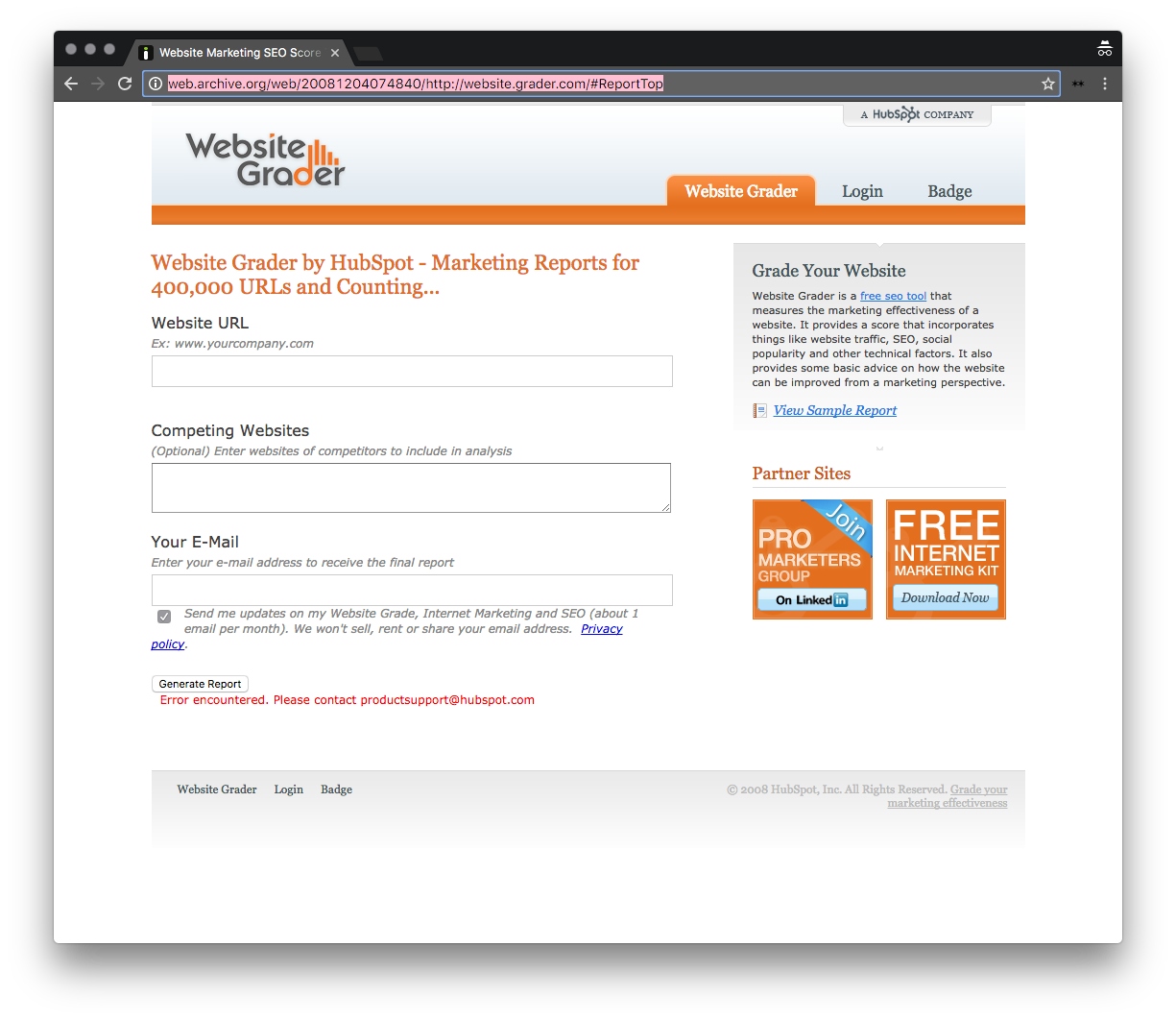 HubSpot Website Grader in 2008
HubSpot Website Grader in 2008
This wasn’t stuff that marketers always knew about. In seconds, Website Grader helped marketers dramatically improve their websites for free—and qualified those marketers as leads for HubSpot. Within two years, Website Grader had analyzed one million URLs. Within three years, it had analyzed three million.
Today, the updated Website Grader breaks down website performance into four categories: performance, mobile, SEO, and security.
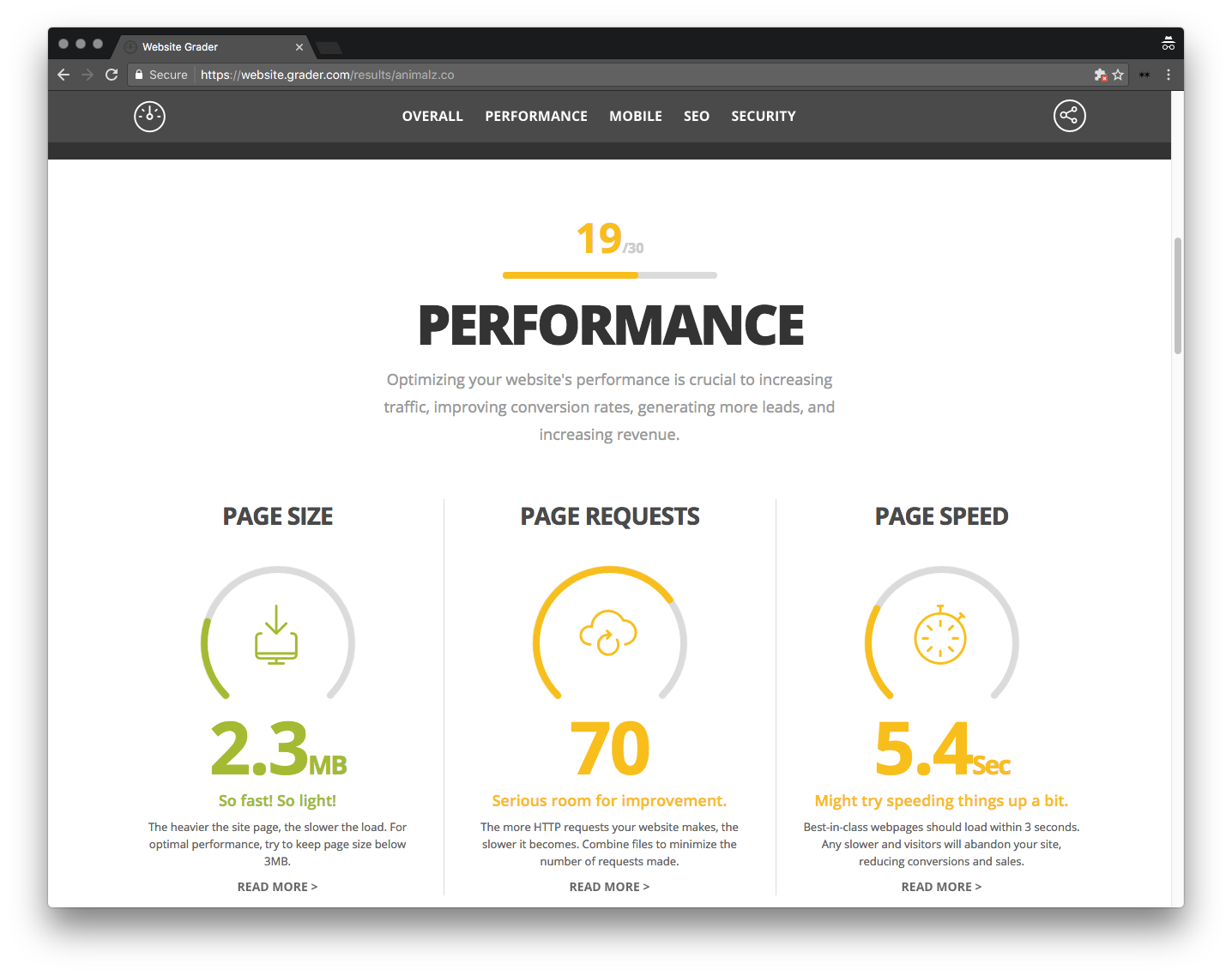 HubSpot Website Grader 2017
HubSpot Website Grader 2017
Rather than pushing users to explicitly sign up for a free-trial, each of the “Read More” calls-to-action in the analysis section are linked to a HubSpot blog post. Website Grader is 100% geared toward generating and educating leads.
Website Grader was the first of a bunch of free analyzer tools targeted at marketers, such as:
- Moz’s Open Site Explorer: In January 2010, Moz launched Open Site Explorer, a free tool for gathering and researching link data for SEO. One year later, in 2011, Moz was receiving 1.25 million monthly visits to its site and Open Site Explorer. By 2013, Open Site Explorer was the top source of direct traffic to Moz, driving around 150,000 direct visitors each month.

- Datanyze’s Insider: Datanyze offers a suite of sales intelligence products that include predictive analytics, lead prospecting, data enrichment, and more. Its free insider Chrome extension and domain analyzer tool helps sales people qualify leads by providing data for company websites.
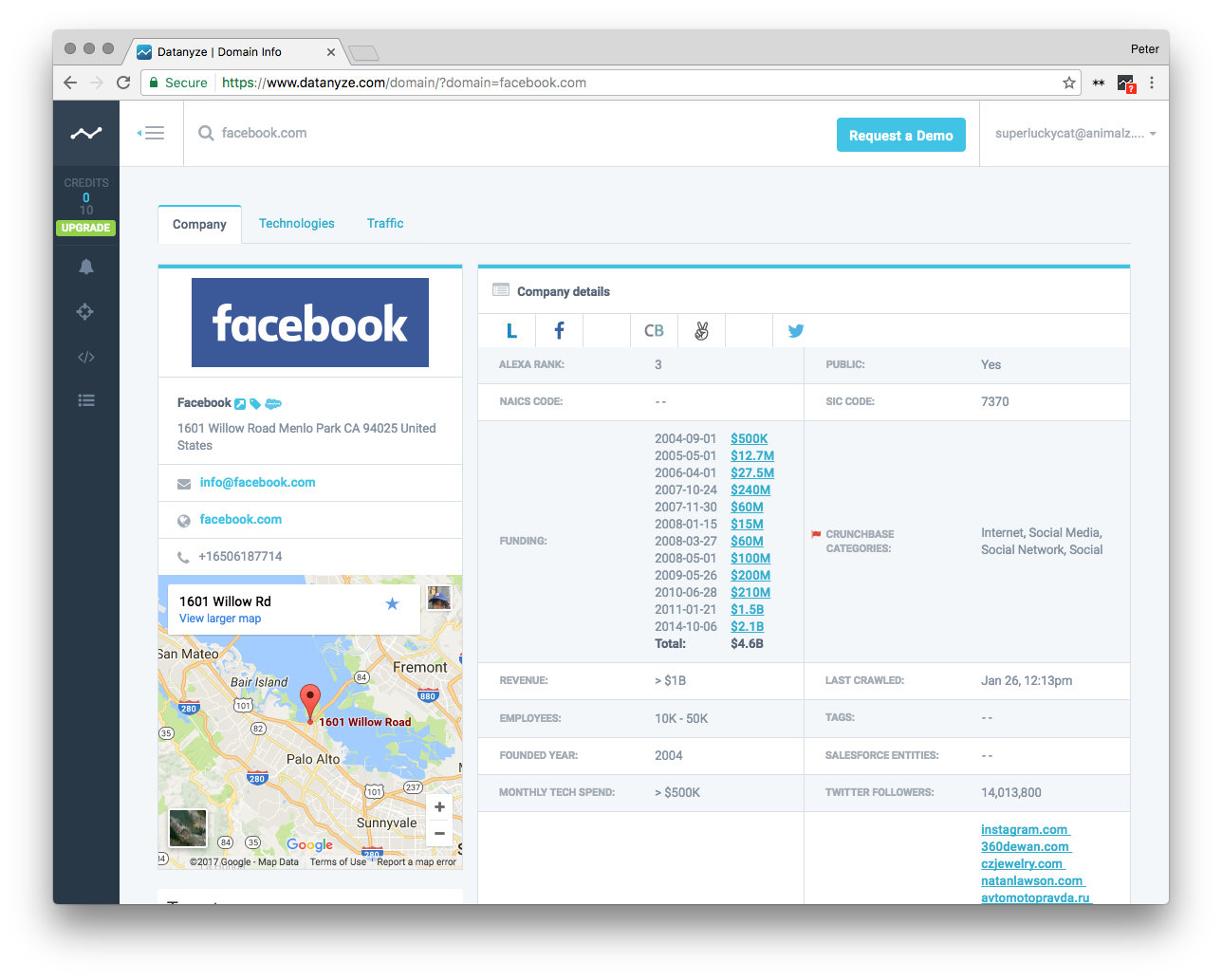
- Even Google’s doing it! Google’s Mobile-Friendly Test and PageSpeed Insights tools both take the form of the website analyzer. The former helps you figure out if your website is mobile-friendly. The second tests your general website performance, including page-speed load times and website optimization suggestions.
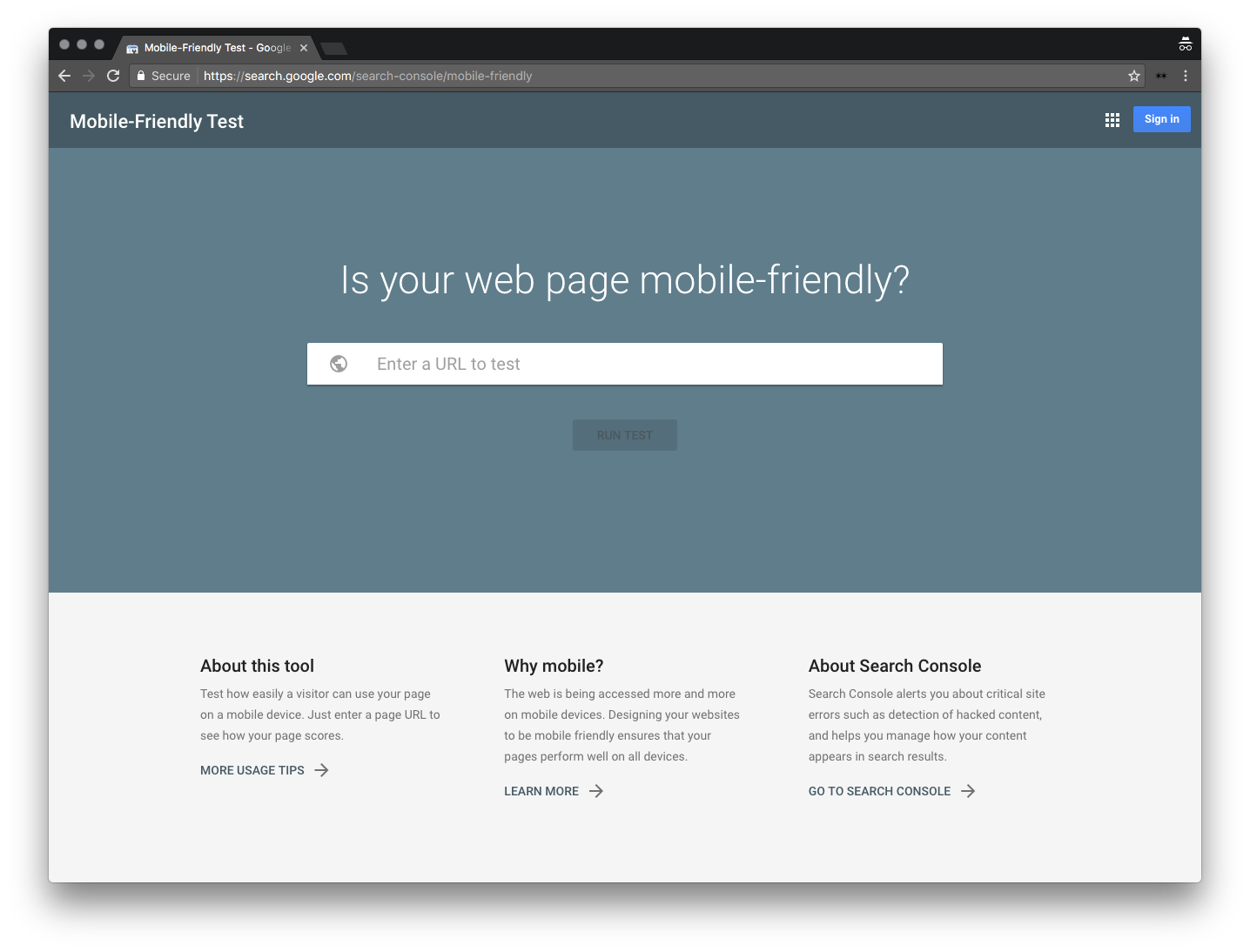
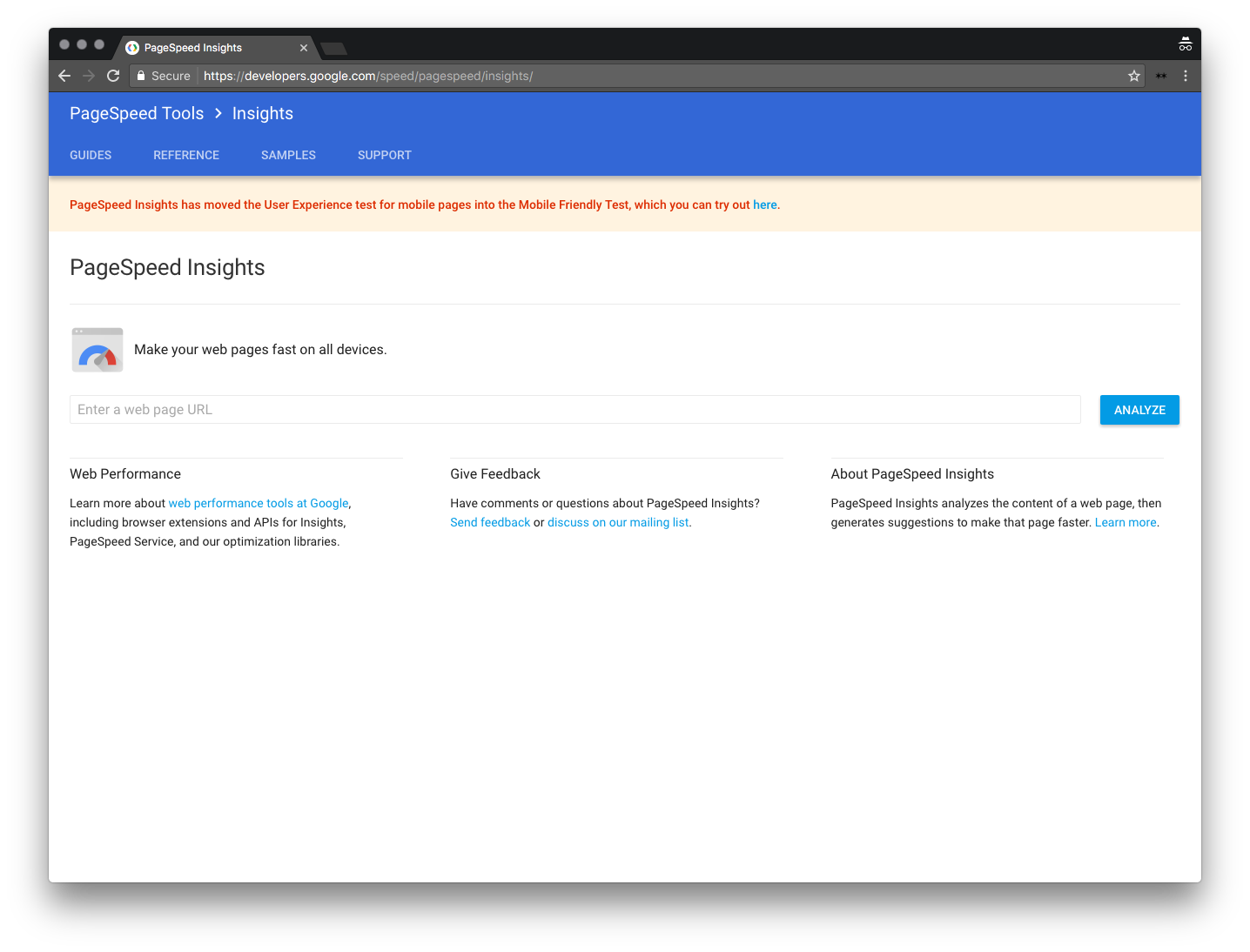 Sales and Marketing often control their own budgets, which means that they can actually buy things. Successful free tools in SaaS help your customers do their jobs better, which means they’re more likely to buy things from you over time.
Sales and Marketing often control their own budgets, which means that they can actually buy things. Successful free tools in SaaS help your customers do their jobs better, which means they’re more likely to buy things from you over time.
Product: Use Free Tools to Show Off Your Core Product
If you have a technical product that’s geared toward improving product development or engineering, getting visibility for your product is hard because the people who would be using your product aren’t the people who control the budget.
Building a free tool that works as a standalone product helps you drive distribution across different teams at a company.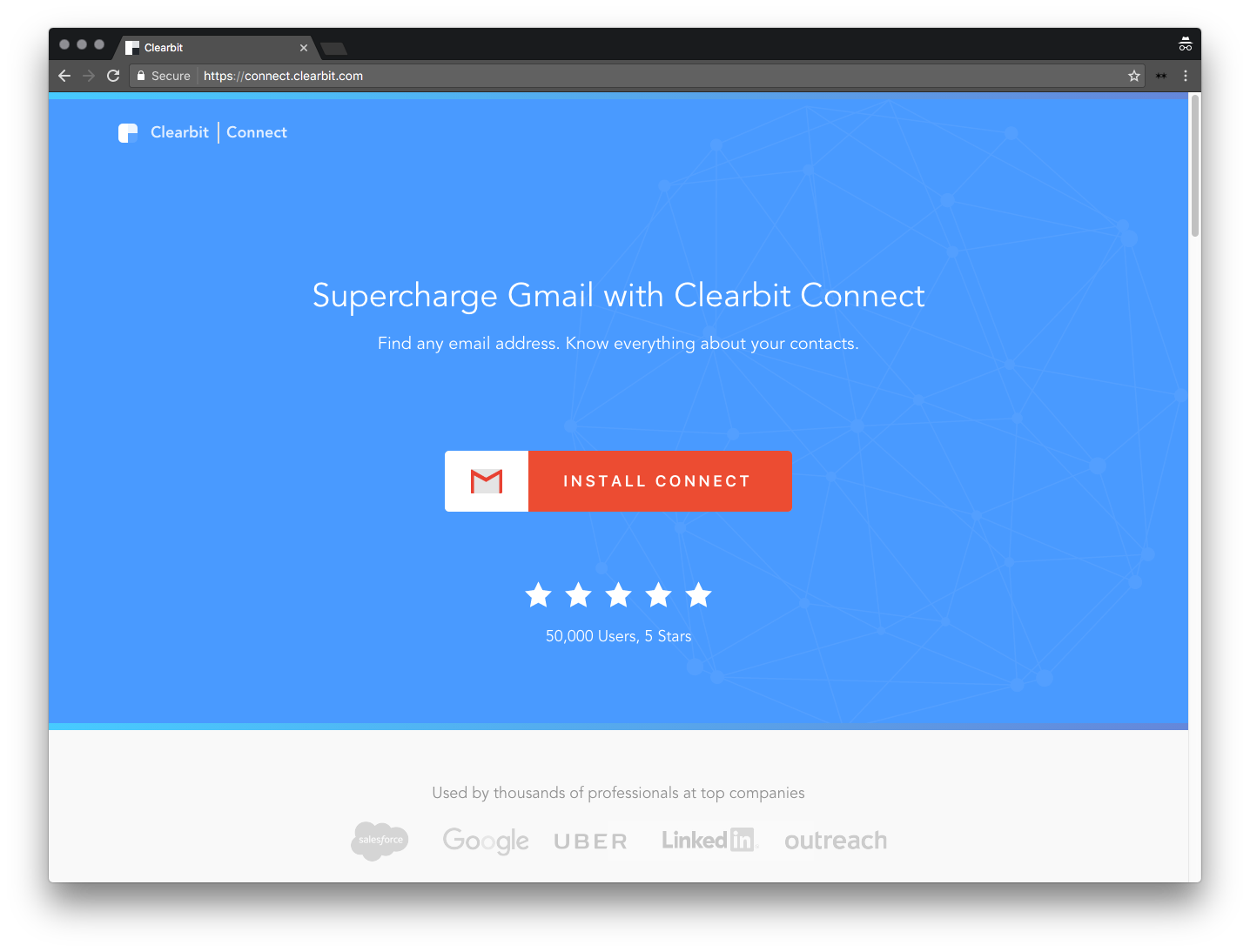 The landing page of Clearbit’s Connect product
The landing page of Clearbit’s Connect product
Clearbit’s Connect tool is a great example. Clearbit’s core product is an API that allows you to enrich leads—you might use it to get company data and social media information for all of your free-trial sign-ups. But to use Clearbit’s product, you need to be a developer or have access to one.
That’s one of the reasons why Clearbit built its Connect product, a free tool that lives inside your Gmail inbox and enriches contacts for free. Developers use APIs, but everyone uses Gmail. As Matt Sornson, head of growth at Clearbit writes:
“Building free products that showcase what our product can do has been our single largest source of inbound leads for our paid products.”
Connect plays to Clearbit’s focus on developers by using engineering as marketing. Two months after launch, Clearbit’s Connect product acquired 30,000 users from companies like Salesforce, Dropbox, Uber, and Square.
More and more companies like Clearbit are turning free tools into standalone products. Here are a few examples:
- Zapier’s Push Extension: Push is a free Google Chrome extension built by Zapier, a company that helps you automate your workflow between apps via API. Zapier charges by the “Zap,” which is a specific link between connected apps. Zapier’s freemium plan allows you 5 Zaps at a time. The Push extension is a great free tool because it allows you to build single-purpose workflows for tasks you want to complete.
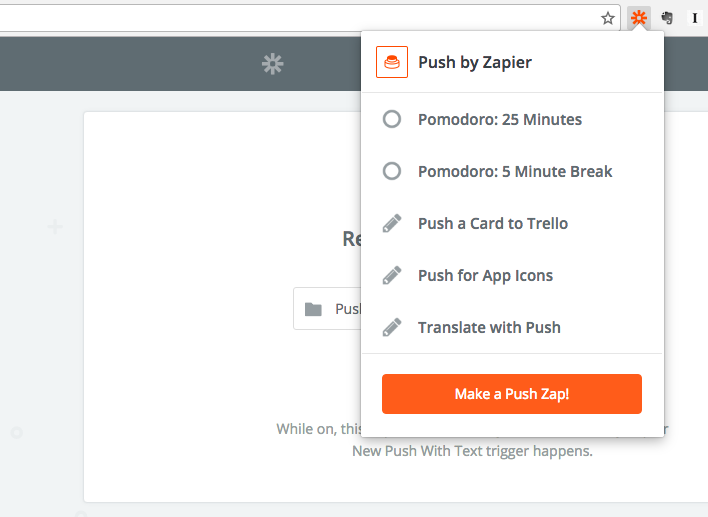
- Auth0’s Sharelock: Auth0 is an API company that offers authentication services for securing your application. Sharelock is a fun, free tool the team built that helps you securely share sensitive data, like credit card information. While Sharelock is separate from Auth0’s core product, it uses Auth0 to authenticate recipients of a Sharelock.
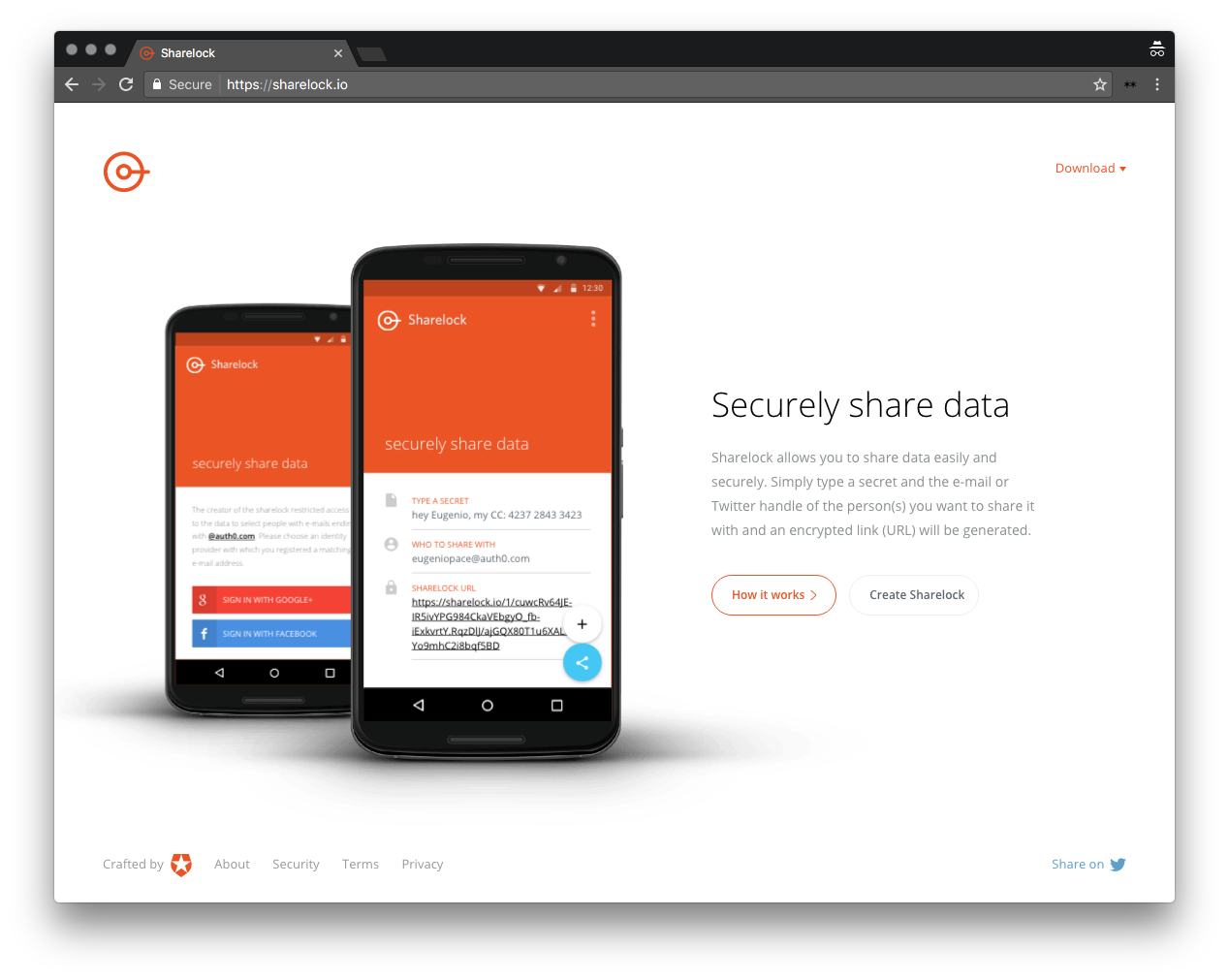 For companies with products that operate lower in the stack or are built around APIs, the developer end-user often isn’t the person who gets the most value from the product. Free tools help these companies drive awareness to the relevant use cases of their core product across hybrid teams.
For companies with products that operate lower in the stack or are built around APIs, the developer end-user often isn’t the person who gets the most value from the product. Free tools help these companies drive awareness to the relevant use cases of their core product across hybrid teams.
Beyond a CAC Hack
Across engineering, sales & marketing, and product, free tools drive down your CAC and help you sustainably generate leads for your business over the long-run. Most importantly, free tools allow you to win over hearts and minds simply because you’re helping people for free. This nets you a lot of immediate, short-term benefits:
1. They Increase Search Traffic
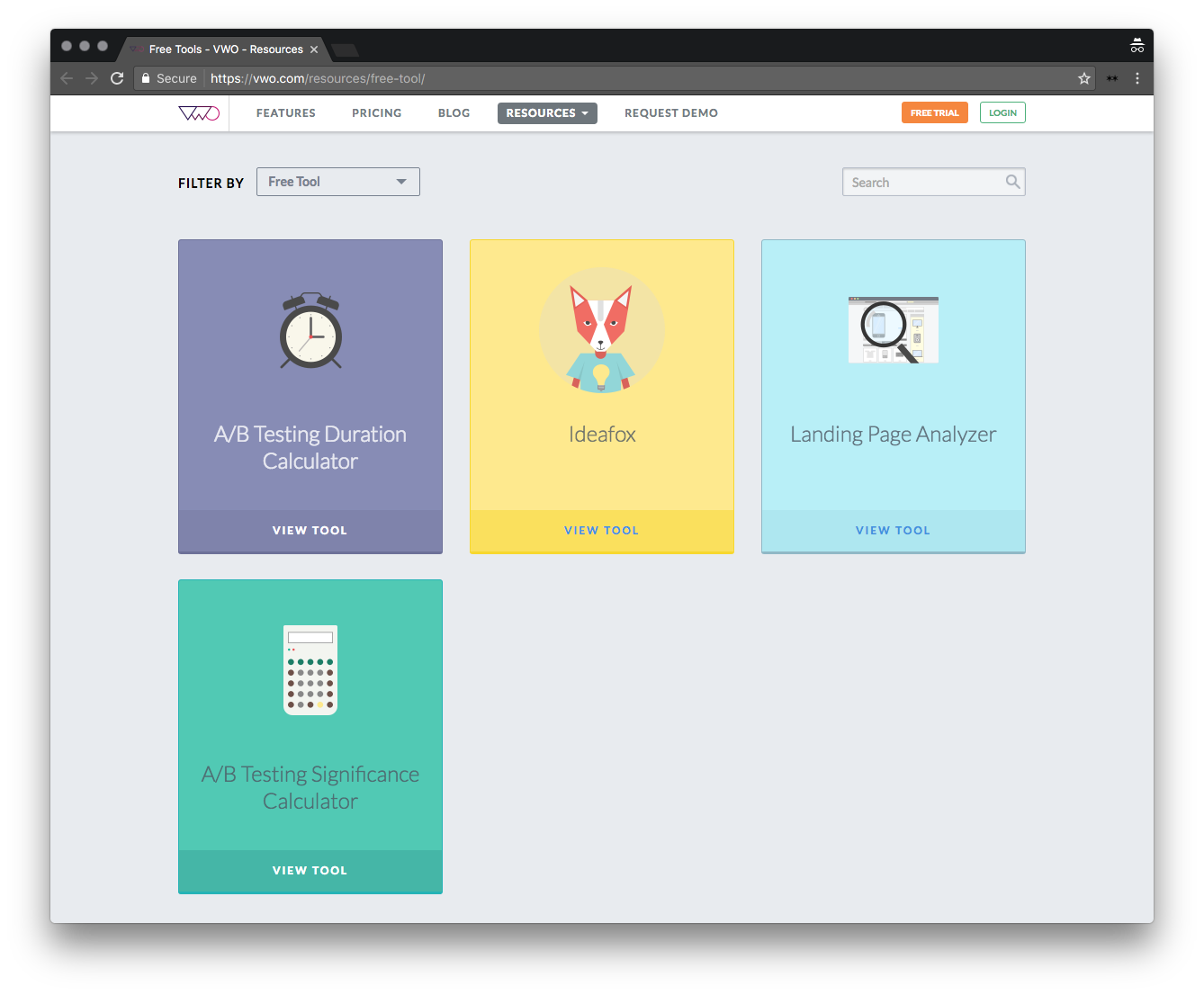 Visual Website Optimizer’s Free Tools Landing Page
Visual Website Optimizer’s Free Tools Landing Page
Even old-school marketing companies like Visual Website Optimizer offer a free tools page. That’s because free tools can give your organic search traffic a huge lift. People love searching for free stuff on Google, and free tools are inherently shareable and linkable.
Look for high and consistent search traffic in your space to identify free tool opportunities.
Using a keyword tool or Google’s auto-complete, test out:
- “Free tool for X”
- “Calculator for X”
- “X Analysis tool”
- “Free X Templates”
2. They are a Good Test for Freemium Products
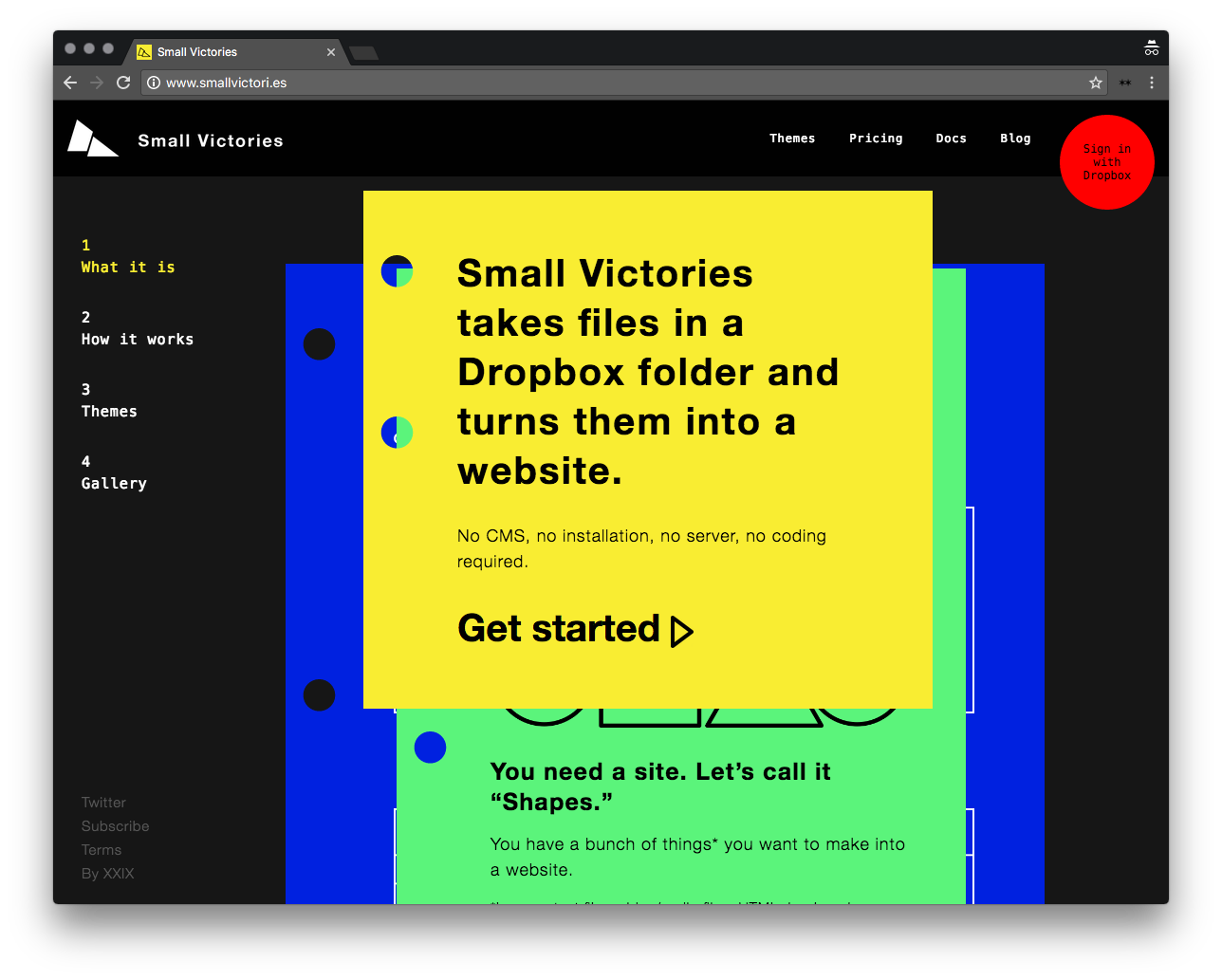 Small Victories Landing Page
Small Victories Landing Page
Small Victories started out as a free tool that took files from your Dropbox folder, and turned them into a website. After thousands of people signed up for the free tool, the company launched a paid plan that offered custom domains, and the ability to edit CSS and HTML. The original tool is still completely free.
If you’re considering building a freemium product, create a free tool first to test the market.
3. They Build Opportunities for Promotion
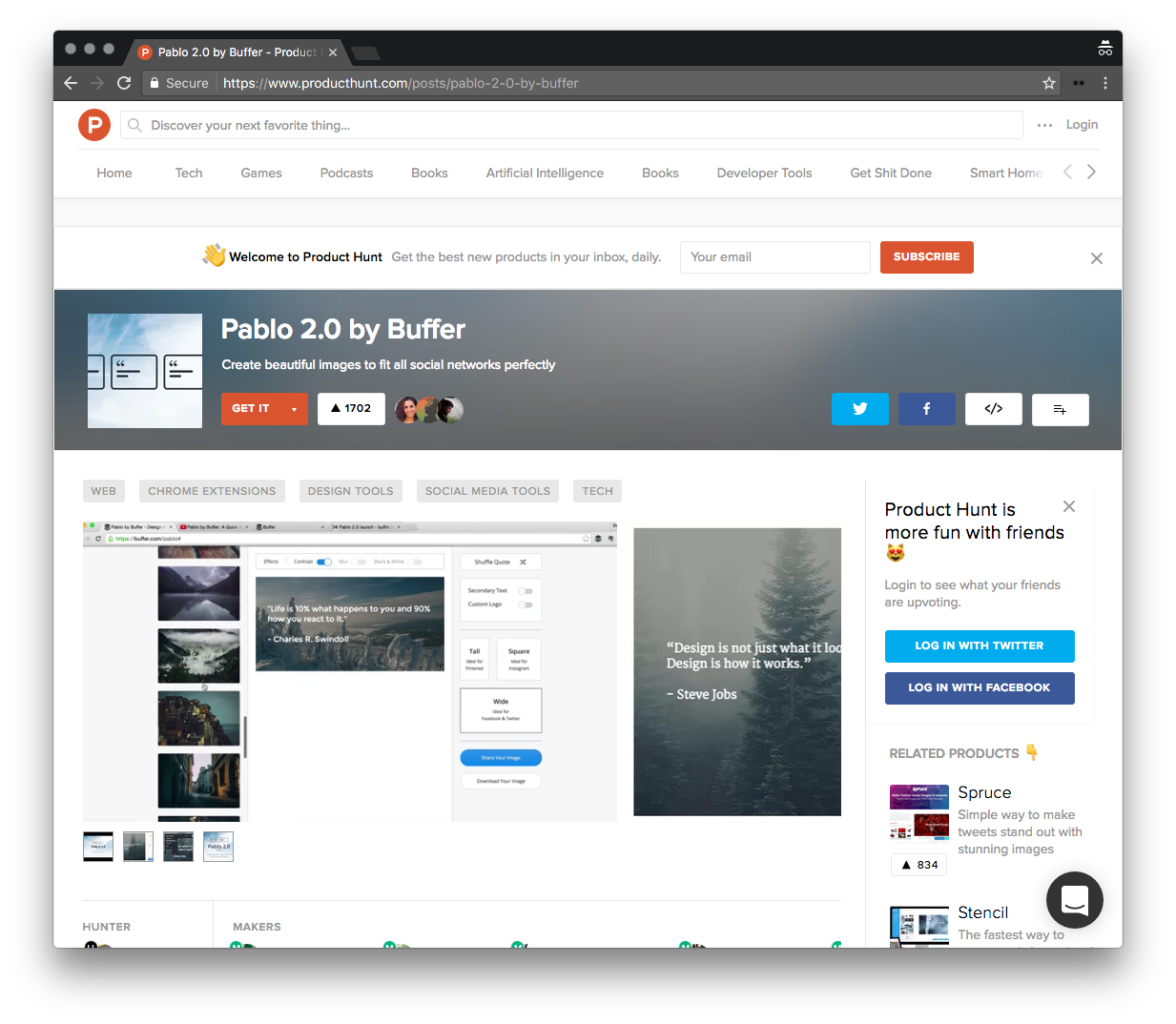 Product Hunt launch of Pablo 2.0
Product Hunt launch of Pablo 2.0
Pablo 2.0, Buffer’s free tool for creating images for social media, received a total of 1,700 upvotes on Product Hunt, and Pablo 1.0 scored even higher with 2,353 upvotes. While Pablo is only tangentially related to Buffer’s primary social media management product, it’s a genuinely helpful tool for creating images to share online.
Every time you release a new free tool, it’s an opportunity to get your brand in front of a wider audience. Promote free tools across your distribution channels:
- PR/Press
- Product Hunt
- Email Newsletter
- Blog Post
What’s Next?
We’re moving to a world where free tools become the products. We’re seeing companies give away their core product for free. They’re not charging subscriptions to monetize. They’re selling additional services on top, or charging a marketplace tax. If you want to learn more about what that looks like, click here.
